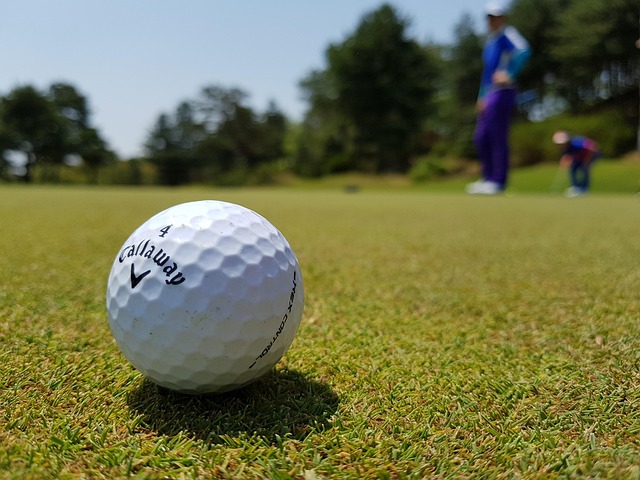College women's golf athletes maximize performance through off-season conditioning, focusing on strength, flexibility, and endurance training. Mental resilience, developed via visualization and mindfulness, is crucial for handling pressure. Customized equipment fitting enhances individual skills. Course analysis and strategic planning boost tournament confidence. Proper nutrition, recovery techniques, and rest ensure peak physical condition.
In the competitive realm of college women’s golf, pre-season preparation is key to unlocking peak performance. This guide delves into crucial aspects that distinguish top golfers. From physical conditioning for strength and flexibility to mastering mental resilience against pre-shot jitters, we explore strategies vital for success. Equipment selection, strategy refinement, and course knowledge are also covered, along with nutrition and recovery tactics to fuel your season’s triumphs.
- Physical Conditioning for Optimal Performance
- Mastering Mental Resilience: Golf's Unseen Battle
- Equipment Selection: Finding Your Perfect Fit
- Strategy and Course Knowledge: A Competitive Edge
- Nutrition and Recovery: Fueling Your Season Success
Physical Conditioning for Optimal Performance

The off-season is a crucial time for college women’s golf athletes to focus on their physical conditioning, which directly impacts performance during the competitive spring season. Golf requires a unique blend of strength, flexibility, and endurance—all vital attributes that can be enhanced through targeted training programs. Athletes should prioritize a balanced workout routine combining cardio exercises like running or cycling with strength training to build core muscles, improve swing mechanics, and reduce injury risk.
Flexibility is equally important, as it allows golfers to maintain proper form throughout a round. Incorporating stretching routines and yoga can enhance range of motion, prevent muscle strains, and promote overall balance—essential aspects for consistent performance on the course. By dedicating time to physical conditioning during pre-season preparation, college women’s golf players can set themselves up for optimal results when competition begins.
Mastering Mental Resilience: Golf's Unseen Battle

In the world of college women’s golf, mastering mental resilience is just as crucial as perfecting swings and putts. Golf’s unseen battle often decides champions, as it demands players to stay focused amidst pressure, manage emotions during frustrating rounds, and bounce back from defeats quickly. This mental fortitude isn’t an inherent trait but a skill cultivated through rigorous practice and strategies tailored to each player’s unique needs.
Players must learn to visualize success, adopt positive self-talk, and develop coping mechanisms for stressful situations. Coaches play a vital role in guiding these young athletes through mindfulness exercises, meditation techniques, and mental preparation drills. By fostering resilience, college women’s golf teams enhance their collective performance and prepare individuals to thrive under the sport’s intense scrutiny, ultimately revolutionizing their game and personal growth.
Equipment Selection: Finding Your Perfect Fit

Choosing the right equipment is a crucial step in any golfer’s pre-season preparation, especially for college women’s golf where performance can make or break a season. Every player has unique preferences and swing dynamics, so finding gear that suits your individual needs is key to maximizing potential. This includes clubs, balls, shoes, and even clothing.
When selecting clubs, consider factors like shaft flexibility, clubhead design, and grip size. The right combination can improve control, distance, and overall comfort on the course. Similarly, a golf ball’s compression, dimple pattern, and core materials affect flight, spin, and feel. Fitting sessions with professionals can help college golfers make informed decisions, ensuring they step onto the first tee with equipment tailored to their skills.
Strategy and Course Knowledge: A Competitive Edge

In the world of college women’s golf, pre-season preparation is paramount for achieving peak performance. One key aspect that sets apart successful golfers is their strategic approach and in-depth knowledge of the course. This competitive edge starts with meticulous planning—studying the layout, understanding pin positions, and identifying potential hazards. Players who invest time in walking the course, noting unique features, and visualizing various shot scenarios gain a significant advantage.
Having this mental map allows golfers to make informed decisions during tournaments, enabling them to choose the most effective clubs, anticipate slopes, and calculate distances with precision. It’s not just about memorizing; it’s about understanding the nuances of each hole, anticipating the challenges, and developing adaptable strategies that can be adjusted based on weather conditions or the performance of competitors. This level of preparation fosters confidence and composure under pressure, setting college women’s golf players apart in highly competitive environments.
Nutrition and Recovery: Fueling Your Season Success

Proper nutrition and recovery are essential components for any athlete, especially in the demanding world of college women’s golf. Athletes need to fuel their bodies with balanced meals rich in carbohydrates, proteins, and healthy fats to support energy levels throughout intense practice sessions and tournaments. A well-planned diet can enhance performance, improve recovery between workouts, and reduce the risk of injuries.
In addition to nutritional strategies, effective recovery techniques are vital for maintaining optimal health. Golfers should incorporate activities like stretching, foam rolling, and adequate rest into their routines. Staying hydrated before, during, and after practices or competitions is also crucial. These practices contribute to muscle repair, reduce soreness, and ensure athletes are ready for the next challenge, ultimately leading to improved performance on the course.






